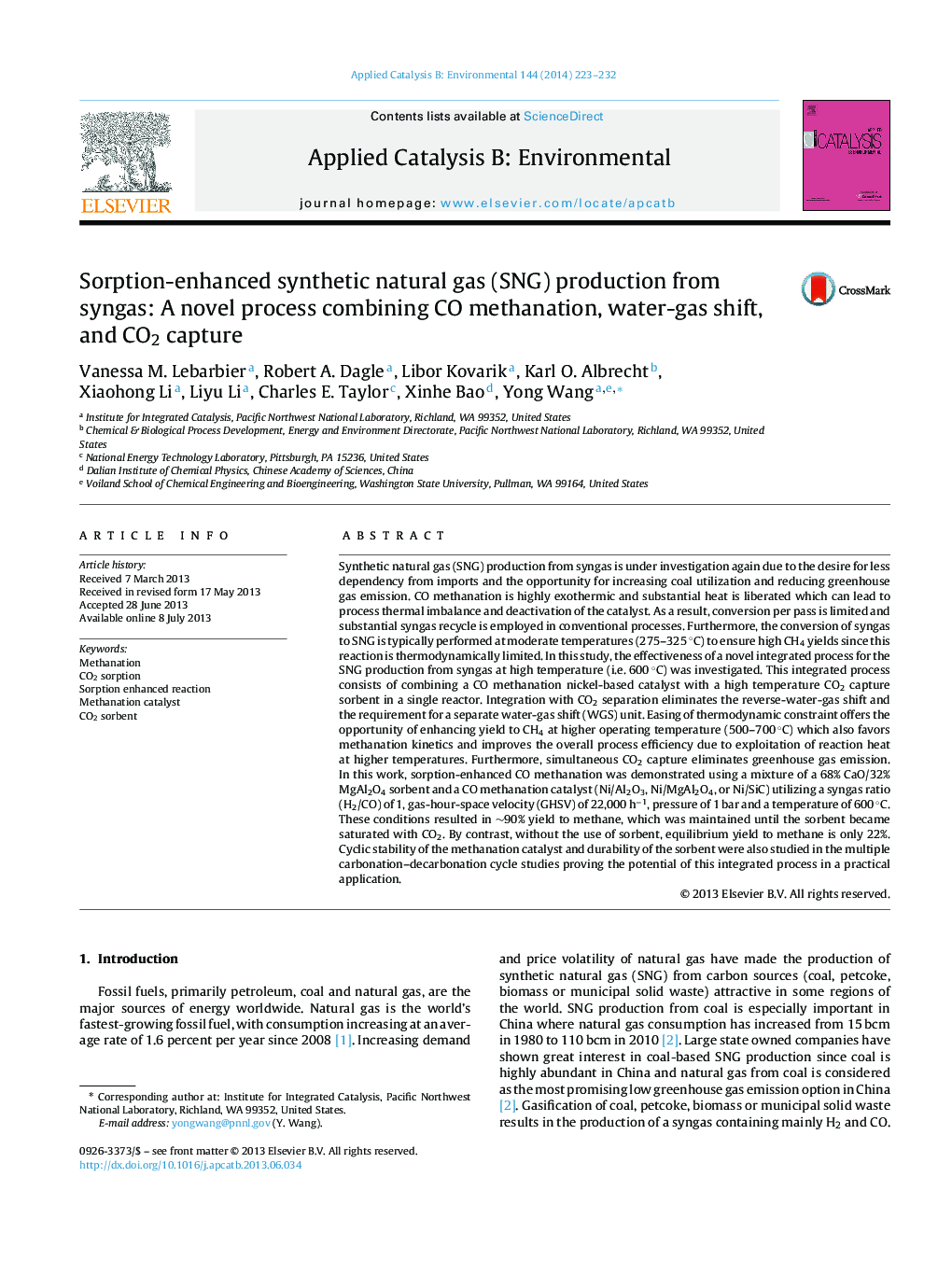| Article ID | Journal | Published Year | Pages | File Type |
|---|---|---|---|---|
| 45355 | Applied Catalysis B: Environmental | 2014 | 10 Pages |
•Coupling of CO methanation and CO2 update kinetics.•A significant increase in synthetic methane yield by combining CO methanation, WGS, and CO2 capture in a single unit.•Excellent cyclic stability with the 68% CaO/MgAl2O4 sorbent and the 20%Ni/MgAl2O4 catalyst.
Synthetic natural gas (SNG) production from syngas is under investigation again due to the desire for less dependency from imports and the opportunity for increasing coal utilization and reducing greenhouse gas emission. CO methanation is highly exothermic and substantial heat is liberated which can lead to process thermal imbalance and deactivation of the catalyst. As a result, conversion per pass is limited and substantial syngas recycle is employed in conventional processes. Furthermore, the conversion of syngas to SNG is typically performed at moderate temperatures (275–325 °C) to ensure high CH4 yields since this reaction is thermodynamically limited. In this study, the effectiveness of a novel integrated process for the SNG production from syngas at high temperature (i.e. 600 °C) was investigated. This integrated process consists of combining a CO methanation nickel-based catalyst with a high temperature CO2 capture sorbent in a single reactor. Integration with CO2 separation eliminates the reverse-water-gas shift and the requirement for a separate water-gas shift (WGS) unit. Easing of thermodynamic constraint offers the opportunity of enhancing yield to CH4 at higher operating temperature (500–700 °C) which also favors methanation kinetics and improves the overall process efficiency due to exploitation of reaction heat at higher temperatures. Furthermore, simultaneous CO2 capture eliminates greenhouse gas emission. In this work, sorption-enhanced CO methanation was demonstrated using a mixture of a 68% CaO/32% MgAl2O4 sorbent and a CO methanation catalyst (Ni/Al2O3, Ni/MgAl2O4, or Ni/SiC) utilizing a syngas ratio (H2/CO) of 1, gas-hour-space velocity (GHSV) of 22,000 h−1, pressure of 1 bar and a temperature of 600 °C. These conditions resulted in ∼90% yield to methane, which was maintained until the sorbent became saturated with CO2. By contrast, without the use of sorbent, equilibrium yield to methane is only 22%. Cyclic stability of the methanation catalyst and durability of the sorbent were also studied in the multiple carbonation–decarbonation cycle studies proving the potential of this integrated process in a practical application.
Graphical abstractWith CO2 sorption, methane yield significantly increases and is not limited by thermodynamic equilibrium.Figure optionsDownload full-size imageDownload as PowerPoint slide
